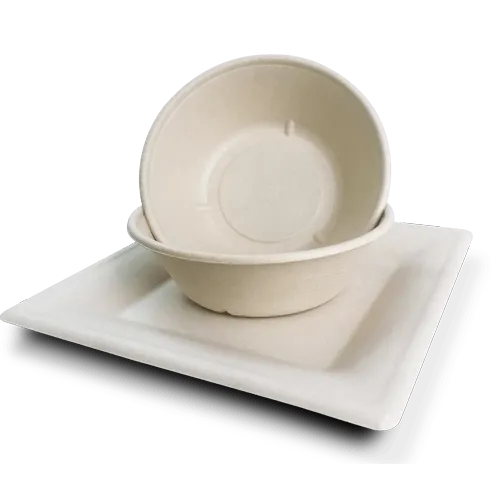In an era where plastic pollution and environmental concerns dominate global discourse, eco-friendly tableware made from renewable agricultural by-products like sugarcane bagasse and wheat straw offers a sustainable, practical alternative. These fibrous materials, once considered agricultural waste, are now valuable raw resources for manufacturing biodegradable plates, bowls, trays, and cutlery.
This article explores how to effectively utilize bagasse and wheat straw to produce eco-friendly disposable tableware, including the raw material preparation, production process, required machinery, and business potential.

Why Sugarcane Bagasse and Wheat Straw?
| Material | Description | Benefits |
|---|---|---|
| Sugarcane Bagasse | The fibrous residue left after extracting juice from sugarcane | Abundant, biodegradable, heat-resistant, compostable |
| Wheat Straw | The dry stalk left after harvesting wheat grains | Naturally lightweight, strong fiber, renewable, carbon-neutral |
Both materials are non-toxic, microwave-safe, and compostable, making them excellent for manufacturing disposable tableware like plates, cups, bowls, and food trays.
Step-by-Step: How to Produce Eco-Friendly Tableware
1. Raw Material Collection
- Bagasse: Collected from sugar mills after juice extraction.
- Wheat Straw: Gathered from farms after grain harvesting.
2. Cleaning and Pulping
- Remove impurities (dust, dirt, sand).
- Use a hydraulic pulper to mix fibers with water and turn them into pulp.
- Filter and refine the pulp to ensure even consistency and remove coarse particles.
3. Pulp Forming Process
- Pour pulp into pulp molding forming machines with custom molds.
- Apply vacuum suction to form the shape on the mold surface.
- The moisture is partially removed during this phase.
4. Hot Pressing
- Transfer the wet product to a hot press machine.
- Under heat and pressure, the tableware is shaped, dried, and hardened.
- This step enhances the smoothness, strength, and water/oil resistance.
5. Trimming and Sterilization
- Trim the edges using cutting equipment.
- Optional UV or steam sterilization to ensure hygiene.
6. Packaging
- Stack and pack using automated systems.
- Ready for distribution to food service companies, restaurants, retail stores, or export.
Key Machinery Required
| Machine | Function |
|---|---|
| Hydraulic Pulping Machine | Turns raw fiber into slurry pulp |
| Pulp Screening & Cleaning Equipment | Removes impurities from the pulp |
| Tableware Forming Machine | Shapes the pulp into products using molds |
| Hot Press Machine | Drys and hardens the molded product |
| Edge Trimming Machine | Cuts off excess material |
| Sterilization Equipment | (Optional) Ensures product hygiene |
Where Is It Suitable to Start This Business?
This production method is ideal for countries with:
- Abundant agricultural waste (e.g., India, Thailand, Brazil, China, Vietnam, Egypt)
- Ban on single-use plastics (e.g., European Union, Canada, Kenya, California)
- High food packaging demand (fast food chains, take-out markets)
Investment Potential
| Factor | Value |
|---|---|
| Raw Material Cost | Low – typically agricultural waste |
| Market Trend | Rapid growth in sustainable packaging and eco-tableware |
| ROI | High – due to rising global bans on plastic |
| Government Support | Many countries offer green tech incentives |
Conclusion
By using sugarcane bagasse and wheat straw, manufacturers can create strong, eco-friendly tableware that’s safe for both people and the planet. With growing global demand, supportive government policies, and readily available materials, this is the perfect time to invest in biodegradable tableware production.



